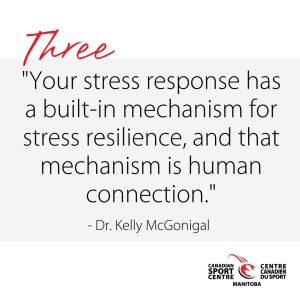Let’s Talk. Let’s Listen.
Bell Let’s Talk Day is an annual event, creating a campaign around mental health awareness and encouraging everyone to take meaningful action to create positive change. Their website (https://letstalk.bell.ca) offers a number of resources and suggestions on ways to take action.
CSCM appreciates this initiative and our Psychology team has created some prompts to help us so that when someone needs to talk, we are ready and able to listen.
Three ways to create a safe space for someone who wants to talk.
1. Show that you are available and offer opportunities for connection

If it seems like someone might need support, a meaningful first step may be for you to initiate a conversation. By offering to chat, you are opening a door for connection. Even if they don’t want to talk (or don’t want to talk right now), knowing someone has noticed them and cares may help them feel less alone.
Some conversation starters to invite connection:
- It seems like you’ve been (quiet, missing practice, looking sad) lately. Is there something going on?
- I was thinking about you and wanted to check in. How are you?
- I care about you and I’ve noticed you haven’t been yourself the last little bit. Would you want to talk about it?
When you’re building connection, it’s also important to think about time and place. Where might that person feel comfortable to talk about these things? Is there a way you can help them feel safe to share?
2. Be present and listen without trying to ‘fix’ things

Sometimes people avoid having conversations about mental health because they are afraid they won’t say the ‘right’ thing, are worried they’ll make it worse, or because they don’t have a solution. When someone is struggling, sometimes listening is enough.
Some things to consider when you’re in a conversation:
- Don’t try to steer the conversation. Be open.
- Take the pressure of yourself- you don’t need to solve the problem or come up with the ‘perfect’ thing to say.
- Do not judge people for their thoughts or feelings.
- Ask the person if they want feedback or help, or if they just need to talk.
- Practice empathy, not sympathy. Empathy is joining someone in their feelings, whereas sympathy is feeling sorry for someone for having those feelings.
- Acknowledge how you’re feeling and share your appreciation of them confiding in you: “It really means a lot that you shared this with me. Thank you.”
3. Human connection is an excellent way to manage stress

In her TED Talk, “How to Make Stress Your Friend”, Kelly McGonigal shares about the hormone oxytocin – how it causes us to seek connection. When we are stressed, we are encouraged to reach out to others and share. In turn, connecting with others actually strengthens your ability to manage stress- you recover faster from stress and become more resilient against future stressful experiences.
Remember these things:
- Reflect on a recent period of stress. How did you feel? What were some clues or cues that you are stressed? Does anything change in your behaviour, thoughts, or feelings?
- Consider who and what helps you manage stress- come up with a plan for yourself for the next time you’re feeling stressed.
- When you are feeling stressed, reach out to someone you care about.
- If someone in your life seems stressed, offer them a safe space to talk.
Let’s talk. Let’s listen.
This blog was compiled CSCM staff and interns, including Dr Adrienne Leslie-Toogood, Craig C Brown, Lindsay Berard, Cheryl Coulter, and Nickolas Kosmenko.


